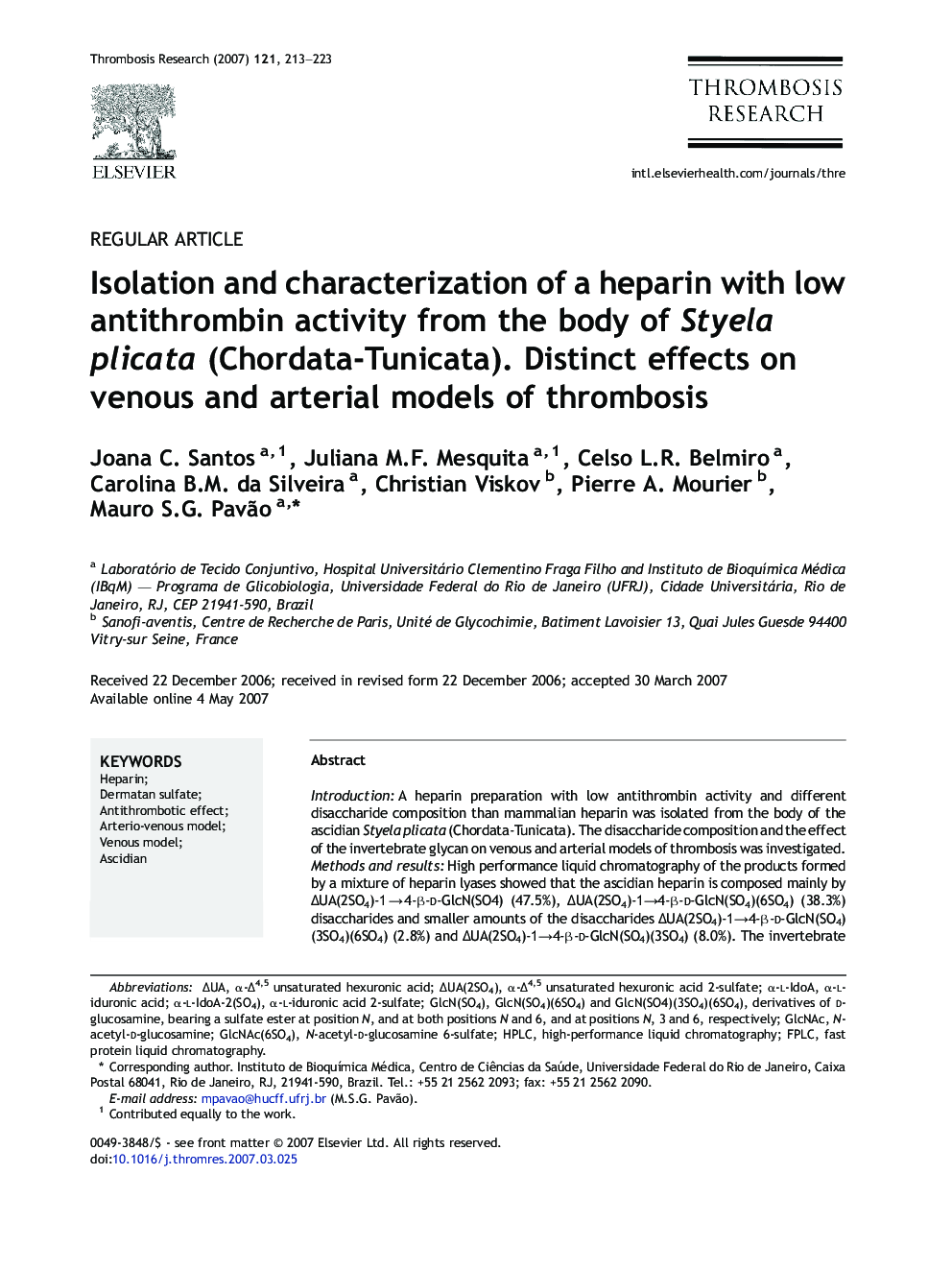| Article ID | Journal | Published Year | Pages | File Type |
|---|---|---|---|---|
| 3029899 | Thrombosis Research | 2007 | 11 Pages |
IntroductionA heparin preparation with low antithrombin activity and different disaccharide composition than mammalian heparin was isolated from the body of the ascidian Styela plicata (Chordata-Tunicata). The disaccharide composition and the effect of the invertebrate glycan on venous and arterial models of thrombosis was investigated.Methods and resultsHigh performance liquid chromatography of the products formed by a mixture of heparin lyases showed that the ascidian heparin is composed mainly by ΔUA(2SO4)-1 → 4-β-d-GlcN(SO4) (47.5%), ΔUA(2SO4)-1→4-β-d-GlcN(SO4)(6SO4) (38.3%) disaccharides and smaller amounts of the disaccharides ΔUA(2SO4)-1→4-β-d-GlcN(SO4)(3SO4)(6SO4) (2.8%) and ΔUA(2SO4)-1→4-β-d-GlcN(SO4)(3SO4) (8.0%). The invertebrate heparin has an aPTT activity of 18 IU/mg and an antithrombin-mediated antithrombin and anti-factor Xa activities 10-fold lower than that of mammalian heparin. In a venous model of thrombosis in the vena cava, S. plicata heparin inhibits only 80% of thrombosis at a dose 10-fold higher than that of the mammalian heparin that inhibits 100% of thrombosis. However, in an arterio-shunt model of arterial thrombosis, both S. plicata and mammalian heparin possess equivalent antithrombotic activities. It is also shown that at equivalent doses, ascidian heparin has a lower bleeding effect than mammalian heparin.ConclusionThe antithrombin-mediated anticoagulant activity of heparin polymers is not directly related to antithrombotic potency in the arterio-venous shunt. The results of the present work suggest that heparin preparations obtained from the body of S. plicata may have a safer therapeutic action in the treatment of arterial thrombosis than mammalian heparin.
